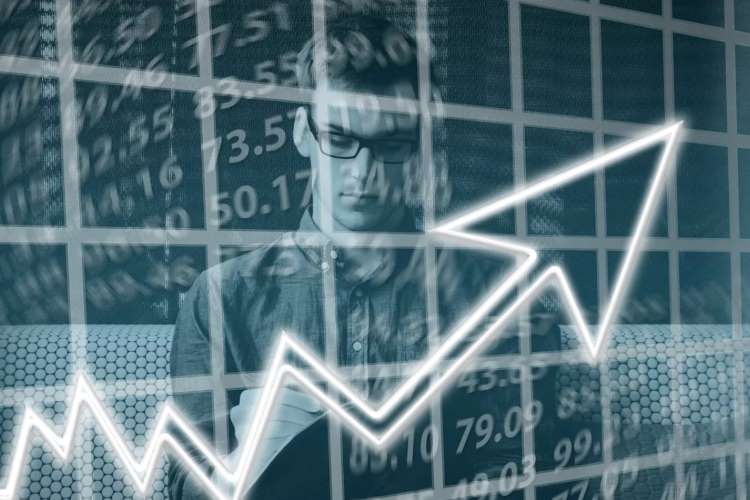
Bioterrorism threat to global trade: The last few years saw the emergence of several new revolutionary technologies that led to the automation of manufacturing and industrial practices. Many commentators have termed this development the next industrial revolution or the next Internet. The global value chains will be structurally affected by these changes in different ways. Recent trends suggest that trade policies have been shaped in response to the technological developments. The introduction of disruptive technologies seems to have a major impact on the economic structure of various entities. Whether it’s in terms of cost reduction, efficiency gains or productivity improvements, the developments have resulted in fundamental changes in conventional trade.
These technologies also have an impact on trade policies in terms of overseeing new protectionism against hi-tech products, adjustments in employment, skill development, trade agreements, and trade infrastructure.
READ I Future perfect: Life after the fourth industrial revolution
These disruptive technologies are now more potent with the advent of artificial intelligence and machine learning. Artificial intelligence (AI) is the ability of a machine or a computer program to think and learn. The concept of AI is based on the idea of building machines capable of thinking, acting, and learning like humans. The term artificial intelligence dates back to the work of Stanford researcher John McCarthy, who in 1956, coined the term and defined the key mission of AI as a sub-field of computer science. Machine learning (ML), on the other hand, is a branch of artificial intelligence that employs algorithms that parse data, learn from it, and apply to make informed decisions. Automation is one of the major applications of the new technologies that have close links to Artificial Intelligence, while being distinct from it. AI induces intelligence in machines and makes them mimic human behavior and intelligence. Many experts and professionals predict that AI will have the ability to facilitate autonomous systems as it develops along the way. Similarly, Machine Learning builds systems that automatically learn and improve from experience (without being explicitly programmed). But unlike AI, ML has traditionally not included symbolic reasoning using logic.
When AI and automation come together, they open up a large number of possibilities. The combination of the two may lead to many derivatives such as acceleration and precision of decision-making and improved processes at lower cost and higher efficiencies without relying on cheap labour. It also has a favorable impact on economic policies for bringing safety, fairness, accountability and transparency.
READ I Vision 2040: 15 trends that will shape the future of healthcare
Data science is another domain within the disruptive technologies. Data science also has similar advantages as AI with both of them often crossing paths. Data science has a significant impact at global platforms such as WTO. There have been WTO discussions about tariffs on cross-border data flows. It has been proposed as a source of additional revenue and negotiation points for some developing countries. This may be quite justified because there may have been revenues lost due to the servicification of several goods (e.g., YouTube videos of US Pop music have replaced CDs and cassettes that were subject to customs duties until 1990s). This technological change may also have a negative effect on revenues due to large-scale cross-border transactions. It may also harm other developed countries for the same reason.
Just like AI & ML, 3D printing technology has been a game changer. The 3D printing technology, also known as additive manufacturing, has come a long way since it was first developed in 1980s. While 3D printing originated as a tool for rapid prototyping, it has now evolved to cover a number of different technologies. The evolution of 3D printing has been rapid with a number of companies adopting the technology. The applications and use may vary across industries. They broadly include tooling aids, visual and functional prototypes, and even end-parts. As the potential applications for 3D printing increase, companies are beginning to find ways to create new business models and opportunities with the technology. Now, screws can be 3D printed on a large scale, but in future even cars may be 3D printed. This means greater trade in raw materials and elimination of cheap labour as a comparative advantage. Anyone can manufacture anything if raw materials are available. Broadly, it may reduce trade (by 40% according to ING, 2017) – but raw material exporters may gain.
READ I Changing tack: Poverty action in the time of Covid-19 pandemic
Blockchain is another emerging domain that employs distributed ledger technology, enabling connected computers to reach agreement over shared data. It eliminates the need for an intermediary. The potential for blockchain in business is now rising thanks to advantages it provides in terms of eliminating intermediaries (and admin burden) and securing trust. Blockchain when combined with other new technologies has the ability to transform businesses. Blockchain offers two key advantages for cross-border commercial transaction — trust and traceability. This can elevate both the exporters and importers in developing countries to gain prosperity. Blockchain technology across the international trade landscape has touched a lot of aspects related to trade, whether it is trade finance, customs or provenance of goods, With the ability to significantly lower trade costs, especially for developing countries, BC has the ability to offer lower costs for firms that currently engage in trade and effectively reduce entry barriers to trade.
Another major technological evolution lately is the emergence of cryptocurrency. There is a possibility that the dominance of global currencies for trade may fade with the rise of cryptocurrencies. This may change the way trade evolves, avoiding many losses that may happen due to currency fluctuations. However, it cannot be ascertained since cryptocurrencies are not necessarily stable either. Chinese Sovereign Digital Currency may be a gamechanger, because it both solves the stability problem as it is issued by the government and provides the exporters with new types of support and subsidies that were not possible earlier.
READ I South Asia trade: India must forge close economic ties to ease regional tension
Drone technology is also a disruptive technology. Drones are now effectively used for unmanned inspections in several industries such as mining and energy, monitoring the environment and yields in agriculture, as well as tourism and entertainment. They can cut costs by up to 90% labor reduction in some industries as reported by McKinsey in 2018. The effects on trade may be similar to those of automation, in terms of reduced costs and increased efficiencies. Countries that may adopt drones and related technologies for production may gain comparative advantage.
Other IT technologies are also becoming a source of profits for industries like sharing economy such as Uber Model, Internet of Things (IoTs) that can substantially cut costs, increase efficiencies and improve transparency. Cloud services too have shown an ability to reduce data handling and sharing costs substantially.
The underlying point is that countries adopting new technologies are constantly raising their efforts by cutting costs, raising efficiencies and adjusting labour supply with a long-term vision. Greater trade may be created by some technologies (e.g., blockchain, IoT, cloud) through increased transparency and trade facilitation. There is a feeling that trade is getting eroded by some technologies (AI, automation, robotics, 3D printing), as they diminish the importance of comparative advantage. The adoption of technologies into trade is definitely challenging the trade policies of several nations, making them adjust to the new order. There is a need for incorporating new technologies for the better good.
(Dr Badri Narayanan is the founding director of Infinite Sum Modelling, Seattle and a senior economist with University of Washington Seattle. He is also a non-residential senior fellow with ECIPE Brussels and CSEP New Delhi. Dr Shikha Singh is an Assistant Professor and Area Chair, International Business, Symbiosis Centre for Management Studies, Noida.)
Dr Badri Narayanan Gopalakrishnan is Fellow, NITI Aayog. Views expressed are personal.


